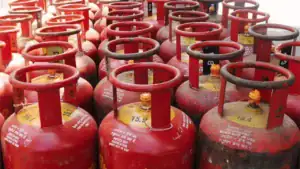Aviation fuel farms are critical infrastructure components at airports and military bases, designed to safely store, manage, and distribute large volumes of aviation fuels. This guide provides a complete overview of their structure, daily operations, safety protocols, and the latest technological advancements as of 2025.
Structure of Aviation Fuel Farms
Fuel farms consist of multiple interconnected systems that ensure safe fuel storage and delivery. Below is a detailed table of core components:
Read More: Iranian Parliament Approves Closing the Strait of Hormuz, Fuel Crisis Looms
| Component | Description |
|---|---|
| Storage Tanks | Aboveground or underground, designed for Jet-A and Avgas, sized up to 125,000 gallons |
| Pumps & Filters | Fuel transferred using pumps; filters remove sediment and water |
| Piping Systems | Stainless or coated pipes with leak detection and pressure controls |
| Dispensers | Over-wing or hydrant systems for precise refueling |
| Meters & Gauges | Accurate measurement systems for inventory and safety compliance |
| Containment Systems | Includes dikes, sumps, and spill basins to contain leaks or overflows |
| Grounding Systems | Prevents static charge ignition by bonding all fueling components |
Operations of Aviation Fuel Farms
The operational flow of a fuel farm follows strict protocols to ensure quality and safety:
- Fuel Receiving: Aviation fuel arrives via tanker trucks or pipelines.
- Quality Assurance: Filtration, water draining, and laboratory testing before storage.
- Storage & Monitoring: Stored in tanks equipped with sensors and level indicators.
- Distribution to Aircraft: Via hydrant or refueling trucks to the aircraft stand.
- Maintenance Checks: Routine calibration, leak detection, and inspection of all equipment.
- Recordkeeping: Daily logs, inventory tracking, and fuel quality documentation.
Safety and Compliance Standards
Aviation fuel farms operate under stringent global and national safety codes:
| Standard / Regulation | Purpose |
|---|---|
| FAA AC 150/5230-4C | Operational and design standards for airport fueling systems |
| NFPA 407 / NFPA 30 | Fire protection and safe fuel handling requirements |
| IATA JIG Guidelines | Joint inspection protocols for aviation fueling |
| OSHA / EPA Compliance | Worker safety and environmental standards |
| ICAO Fuel Handling Guide | Global standards for international airport fueling operations |
Key Safety Measures:
- Bonding and grounding to eliminate static sparks
- Spill containment systems and automatic shutoff valves
- Fire suppression systems and extinguishers
- Use of PPE and emergency response protocols
- Regular employee training and certifications
Read More: Finance Minister Chairs High-Level Talks on Fuel Prices as Regional Tensions Escalate
Emerging Trends and Technologies in 2025
| Trend | Description |
|---|---|
| Sustainable Aviation Fuel (SAF) | SAF is being adopted globally with ~2.5 billion liters projected in 2025 |
| Unleaded Avgas Transition | Gradual switch from 100LL to unleaded fuels supported by FAA and industry |
| Modular Fuel Systems | Portable fuel farms for temporary airports or military deployment |
| Digital Monitoring | Automated tank gauging, remote sensors, and AI-based fuel analytics |
| Hydrogen Fuel Infrastructure | Research underway for cryogenic storage and delivery systems |
READ MORE: Fire Extinguisher Price in Pakistan 2025
Conclusion
Aviation fuel farms play a vital role in aviation safety, efficiency, and environmental stewardship. With technological advancement and growing demand for sustainable fuels, modern fuel farms are evolving into smarter, greener, and more secure systems. Their success depends on strict adherence to operational protocols, investment in updated infrastructure, and ongoing staff training. Stay updated with: Bloom Pakistan
Read More: Petrol and Diesel Prices Set to Increase as Govt Reviews Fuel Rates









